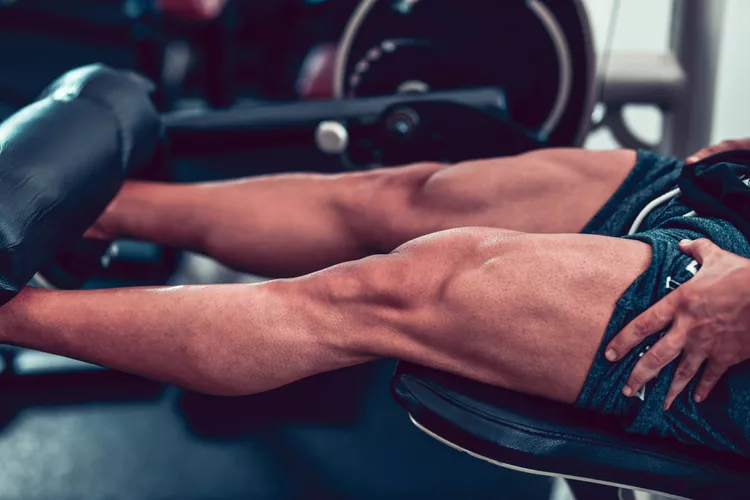
Click Here for Free Bodybuilding and Fitness Magazine Subscription
Thigh Trouble: Accelerating Recovery from a Pulled Muscle with a Compression Thigh Sleeve

Pulled muscles, a prevalent issue transcending activity levels, can significantly impair daily functioning. This article delves comprehensively into expediting recovery from a pulled thigh muscle, emphasizing the integration of a compression thigh sleeve as a supplementary measure. Amidst the intricate landscape of rehabilitation, the article elucidates an array of effective strategies for recuperation and injury prevention.
Understanding Pulled Thigh Muscles
Muscle strains, colloquially termed pulled muscles, emanate from the overextension or tearing of muscle fibers under forceful strain. These strains are classified into mild, moderate, and severe grades, with each denoting varying degrees of tissue damage. Mild strains encompass limited fiber involvement and tolerable discomfort, while severe strains entail extensive damage, necessitating expert intervention.
Symptoms and Diagnosis
The recognition of symptoms associated with a pulled thigh muscle assumes pivotal importance in fostering prompt and apt recovery interventions. Localized pain, swelling, ecchymosis, and restricted range of motion constitute hallmark indications. Accurate diagnosis involves a comprehensive physical evaluation coupled with imaging diagnostics, contributing to a precise assessment of the injury's extent.
RICE Protocol: Initial Steps to Recovery
Central to the treatment paradigm is the RICE protocol-Rest, Ice, Compression, and Elevation. Rest facilitates unhindered tissue repair, while ice application mitigates inflammation. The utilization of a compression thigh sleeve complements this protocol by enhancing blood circulation, minimizing edema, and fostering localized support. Elevation synergistically contributes to improved blood flow and reduced swelling.
Professional Medical Treatment
Severe strains and prolonged discomfort necessitate professional intervention. Physical therapy, a common modality, expedites healing and restores muscle functionality. In conjunction with conventional treatments, the employment of a compression thigh sleeve reinforces therapeutic outcomes by sustaining muscle alignment and optimizing circulation.
Rehabilitation Exercises
A cornerstone of recovery lies in the integration of rehabilitation exercises. These encompass both gentle stretches and muscle-strengthening regimens, heightening blood circulation to facilitate tissue repair and counteract muscle atrophy. Notable exercises encompass hamstring stretches and quadriceps strengthening routines.
Nutrition and Hydration
The role of nutrition in fostering muscle recovery cannot be understated. Adequate protein intake underpins tissue regeneration, while vitamins and minerals synergistically contribute to comprehensive healing. Concurrently, maintaining optimal hydration levels is pivotal, as it sustains tissue elasticity and augments metabolic processes intrinsic to recovery.
Rest and Sleep
Rest holds pivotal significance in the recovery trajectory, facilitating the body's capacity for tissue rejuvenation. Sleep, an integral facet of recovery, enhances tissue repair mechanisms. Establishing a regular sleep pattern, cultivating a conducive sleep environment, and incorporating relaxation techniques collectively optimize sleep quality.
Avoiding Re-Injury
Preventing recurrent muscle strains mandates vigilance in adhering to precautionary strategies. A structured warm-up regimen prepares muscles for exertion, curbing the likelihood of subsequent injury. Employing dynamic stretches and light cardiovascular exercises primes muscles for rigorous activity.
Alternative Therapies
Parallel to conventional treatments, alternative therapies like acupuncture and massage warrant exploration. Acupuncture alleviates pain and bolsters blood circulation, while massage therapy fosters muscle relaxation, ameliorating tension and promoting overall well-being.
Gradual Return to Activity
Resuming physical activity mandates a phased approach, attuned to the body's responses. Gradual reintegration of exertion commences with lighter exercises, progressively incorporating higher-intensity routines. Vigilant monitoring of discomfort or pain during this phase prevents exacerbation of the injury.
Importance of Patience
The virtue of patience underpins the recuperation journey. The intricate healing process necessitates a measured approach, for hastening restorative mechanisms can potentially lead to setbacks. Comprehending the temporal sequence of healing stages and adhering to medical counsel facilitates a smoother recuperative trajectory.
Monitoring Progress
Tracking recovery progression is paramount, entailing incremental escalation of exercise intensity and judicious pain assessment. Regular consultation with healthcare professionals elucidates recovery milestones, warranting informed adaptations to the rehabilitation regimen.
Lifestyle Tips for Prevention
Mitigating subsequent muscle injuries necessitates lifestyle adjustments. A harmonious exercise routine encompassing flexibility, strength, and cardiovascular exercises is pivotal. Prioritizing comprehensive warm-up and cool-down routines primes muscles for exertion and advances the trajectory of recuperation.
In summation, the comprehensive recuperation from a pulled thigh muscle necessitates the harmonious integration of judicious rest, balanced nutrition, purposeful rehabilitation exercises, and enduring patience. Augmenting these strategies, the inclusion of high-quality compression thigh sleeves, such as BLITZU, imparts an additional layer of support and circulatory optimization. This integrative approach, fortified by vigilant medical oversight, paves an expedited avenue to recovery while concurrently mitigating the potential of re-injury and reinstating functional capacity.

